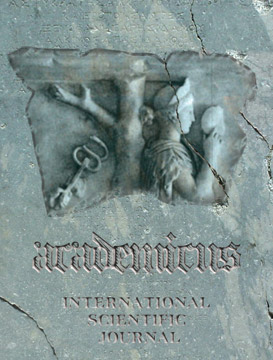Title:
Students satisfaction with the online teaching process
Full Reference List:
| 1. | Arkorful, V., & Abaidoo, N. (2015). The role of e-learning, advantages and disadvantages of its adoption in higher education. International Journal of Instructional Technology and Distance Learning, 12(1), 29-42. |
| 2. | Azlan, A., C., Wong, J. H., Tan, L. K., Huri, M. S., Ung, N. M.,... Ng, K. H. (2020). Teaching and learning of postgraduate medical physics using Internet-based e-learning during the COVID-19 pandemic- A case study from Malaysia. Physica Medica, 11. |
| 3. | Chelcea, S. (1975). Chestionarul în investigaţia sociologică. Bucureşti: Editura Ştiinţifică şi enciclopedică. |
| 4. | Chou, T. C. R. (2014). A Scale of university students’ attitudes toward e-learning on the moodle system. International Journal of Online Pedagogy and Course Design (IJOPCD), 4(3), 49-65. |
| 5. | Coppola, M., Senatore, I., Masullo, G. (2020). Parents in Pandemic: parents’ perceptions of risks and psychological, relational, and pedagogical needs in childhood during the COVID-19 emergency in Italy. Academicus, (22), 103. |
| 6. | Downling, C., Godfrey, J. M., & Gyles, N. (2003). Do hybrid flexible delivery teaching methods improve accounting students learning outcomes? Accounting Education: An International Journal, 374-389. |
| 7. | Gandolfi, E. (2018). Taking a Stand through Digital Games. Academicus International Scientific Journal, 9(17), 62-81. |
| 8. | Gupta, S. B., & Gupta, M. (2020). Technology and E-Learning in Higher Education. International Journal of Advanced Science and Technology, 1320-1325. |
| 9. | Harasim, L. (2002). Shift happens Online education as a new paradigm in learning. The internet and higher education, 42-44. |
| 10. | Hung, M.-L., Chou, C., & Chao-Hsiu Chen, Z.-Y. O. (2010). Learner readiness for online learning: Scale development and student perceptions. Computers & Education, 1083. |
| 11. | Ilie, S.M. (2007). Implementarea sistemelor E-Learning pentru managementul cursurilor online. eLSE, Bucuresti. |
| 12. | Mayes, T., Dineen, F., McKendree, J., & Lee, J. (2002). Learning from watching others learn. In Networked learning: perspectives and issues (pp. 213-227). Springer, London. |
| 13. | Barbour, M. K., & Reeves, T. C. (2009). The reality of virtual schools: A review of the literature. Computers & Education, 52(2), 402-416. |
| 14. | Mpofu, B. (2016). University students use of computers and mobile devices for learning and their reading speed on different platforms. Universal Journal of Educational Research, 4(4), 926-932. |
| 15. | Murairwa, S. (2015). Voluntary sampling design. International Journal of Advanced Research in Management and Social Sciences, 4(2), 185-200. |
| 16. | Obrad, C. (2018). Cercetarea sociologică, De la proiect la raport. Timişoara: Editura de Vest. |
| 17. | Palloff, R. M., & Pratt, K. (1999). Building Learning Communities in Cyberspace: Effective Strategies. San Francisco: Jossey-Bass. |
| 18. | Haavind, S. (2005, October). Facilitating deepened online learning. In E-Learn: World Conference on E-Learning in Corporate, Government, Healthcare, and Higher Education (pp. 696-708). Association for the Advancement of Computing in Education (AACE). |
| 19. | Rosenberg, M. J., & Foshay, R. (2002). E-learning: Strategies for delivering knowledge in the digital age. |
| 20. | Grawitz, M., & Pinto, R. (1972). Méthodes des sciences sociales. Paris: Dalloz. |
Back to article
Academicus
International Scientific Journal
pISSN 2079-3715
eISSN 2309-1088
Address:
Sheshi i Flamurit, Rruga Muze
Al-9401 Vlorë, Albania
Tel: +355 68 60 60 555
info@academicus.edu.al
https://academicus.edu.al


